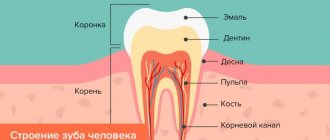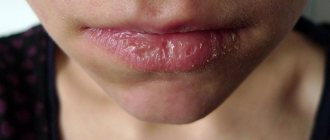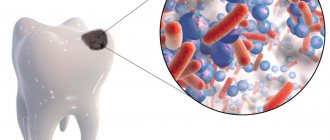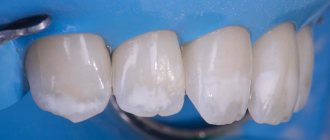Hundreds of pages on the Internet give very “useful” advice on how to get rid of toothache and cure caries with folk remedies. Do you carefully study such pages, memorize all the advice, and also take notes on the particularly tricky ones? When you have a toothache, is it easier for you to read a spell for the waxing moon, kiss a live toad at midnight and rinse your mouth with a decoction of urine from a five-month-old baby, rather than go to the dentist? Then it’s time for you to find out that there is dentistry without pain, that in a modern clinic absolutely painless treatment of caries is possible, and a good doctor will do everything possible to make you feel, if not at home, then at least not like in a torture chamber in the dental chair.
Some people have such a serious fear of dental treatment that they are ready to endure the pain until the last moment, put up with tooth decay and come to the doctor only when the pain is not relieved by any analgesics and because of it the fear is temporarily dulled. Unfortunately, with such a late application, all that remains is to remove the diseased tooth, and the person leaves the clinic happy (he got off easy, he didn’t even have to treat!) and disappears from the dentists’ field of view until the next time - when the next diseased tooth has to be removed. Doctors can tell many stories about relatively young people who were left with practically no teeth, but did not even try to at least replace the lost dental units with a prosthesis, since they could not save theirs. And this is despite the fact that today there are many methods of prosthetics without grinding teeth, which is usually the most feared.
It would be stupid to reproach and shame a person for something for which he is not to blame - after all, none of us fully knows how to control our fears. Therefore, we will neither cause a feeling of guilt nor put pressure on a sense of responsibility. We will simply tell you what methods of painless dental treatment exist today and how you can make up your mind and finally trust the dentist.
Is it painful to treat caries?
One of the most frequently asked questions when going to the dentist is whether it hurts to treat caries. Sitting down in a chair, we warn the doctor that we have a low pain threshold and, in general, we are simply afraid. The doctor will definitely select a drug that will make the treatment comfortable and painless, even in the most difficult cases.
Today, caries can be cured absolutely painlessly.
Treatment
To answer the question whether it is painful or not to treat caries, you need to understand at what stage the disease is. Treatment at the initial stage consists of remineralizing the damaged area of tooth enamel, which naturally does not hurt at all. Even with slight destruction of the enamel, filling is required. At this stage, the procedure can be performed without the use of anesthesia if the patient is willing to endure a little discomfort during drilling of the dental cavity. Subsequent stages of the development of the carious process require thorough treatment, so it is no longer possible to do without anesthesia. A disease such as cervical caries occurs most often in children and people over 30 years of age who do not properly maintain oral hygiene. This kind of caries forms at the interface between the tooth and the gum. Cervical caries is accompanied by increased sensitivity of the tooth to thermal as well as mechanical stimuli. It is characterized by the formation of a small dark spot and the appearance of bad breath. Cervical caries develops very quickly and moves to the root of the tooth. Treatment of such a disease at the initial stage is carried out with the help of a course of therapy; in subsequent stages of the development of the disease, anesthesia, filling, and possibly tooth depulpation will be required. In order not to think about whether it is painful to treat caries, you should immediately contact a dentist if symptoms such as:
- discoloration of tooth enamel;
- the formation of light or dark spots on the tooth;
- the appearance of a tooth reaction to irritants;
- bad breath.
With timely assistance, treatment can be painless and may not require the administration of an anesthetic.
Without anesthesia
In rare cases, doctors have to carry out treatment without anesthesia. This usually happens when there is an allergy to anesthetics. If the patient is intolerant to drugs, the doctor may suggest treatment with laser or chemical reagents. General anesthesia is also an option.
As a rule, the majority of people prefer to undergo treatment under local anesthesia. But there are brave souls who have a high pain threshold or even prefer to do without an injection.
If we are talking about superficial caries, when the tooth tissue is not yet damaged, then this is understandable. But with medium and deep caries, such pain is almost impossible to endure without anesthesia. And it’s not necessary - the latest generation of anesthetics do not cause allergic reactions, they can be used even when treating children and pregnant women.
There is no point in being a hero when treating teeth - without anesthesia it will hurt. And talking about savings also makes no sense.
Wisdom tooth hurts after treatment
Often, patients who have undergone wisdom teeth treatment for caries complain of pain for a long time. Pain syndrome is normal, since figure eights have a more complex structure and have increased sensitivity.
After conservative treatment, pain is considered normal, which decreases in intensity within 5–7 days and then disappears completely. After extraction, due to the persistence of a large wound and traumatic manipulations, pain in the area of the extracted tooth may be felt for 10–14 days. After two weeks, the pain should be eliminated or almost not felt.
If the pain lasts longer or the sensations cause severe agony, you should immediately contact a specialist. Complications may develop that require immediate dental attention.
Wisdom teeth are difficult to treat; due to the lack of their functional significance in the presence of acute processes, dentists do not recommend saving the tooth. To avoid the consequences of caries of eights, experts advise visiting a dental clinic every 6 months for a preventive examination and professional teeth cleaning.
On the front teeth
The main feature of caries on the front teeth is that it develops very quickly. Due to the high load, the enamel quickly becomes thinner, causing tissue destruction to occur at a rapid pace. In advanced cases, severe pain begins, especially while eating. It is also necessary to talk about the aesthetic aspect - caries on the front teeth instantly attracts attention.
It is not painful to treat caries on the front teeth under local anesthesia. Perhaps the doctor will slightly increase the dosage of the drug to completely eliminate sensitivity.
Important. If you notice a spot or initial caries on your front teeth, we recommend that you immediately contact your dentist. If you wait, you risk losing a tooth in the most visible place. And this means additional costs for prosthetics.
Which is better: removal or treatment?
If on other teeth a carious lesion is an indication for treatment and removal is carried out only in case of serious complications, then when eights are affected the situation is always ambiguous.
It is not always possible to treat wisdom teeth caries. Mostly, treatment is used when the lower eights are affected, access to which is more free. Upper jaw caries of wisdom teeth is much more difficult to treat, since the dentist does not always have access to the center of the carious lesion and, even more so, cannot carry out high-quality cleaning and filling of the canals when the infection penetrates deeply.
For this reason, dentists often recommend removing decayed wisdom teeth if:
- the diseased molar is located on the upper jaw;
- caries is diagnosed at a deep stage;
- the tooth has crumbled and cannot be restored;
- there is no figure eight on the opposite jaw;
- the tooth is dystopic or impacted;
- the root system is twisted.
Wisdom tooth caries should be treated when the lesion is detected at the initial or middle stage, the tooth does not have any anomalies in eruption and formation, or it will serve as a support for the prosthesis during the planned prosthetics.
Cervical caries
The majority of patients believe that the treatment of cervical caries is particularly painful. In principle, this is how it is - the cervical zone is characterized by increased sensitivity. Without anesthesia, it will undoubtedly hurt.
Cervical caries can not only be “in plain sight”, but also spread deeper. Therefore, the question of carrying out treatment without anesthesia is not even raised.
How to clean teeth from caries
People don't like going to the dentist, that's a fact. Only this can explain such a widespread prevalence of caries. According to unofficial statistics, about 98% of the world's population suffers from this dental disease. And this despite the fact that with proper daily hygiene and professional cleaning of the oral cavity by a dentist at least once every six months, cariogenic bacteria would have no chance.
The proposed material discusses the basic principles of caries prevention and the algorithm for treating the disease depending on the stage of the pathological process. We will devote a little time to the reasons for the development of pathology, since this is necessary to understand the principles of organizing the preventive process.
Causes of caries
The first question we must ask ourselves is, what is tooth decay? This is a dental disease in which tooth enamel and dentin are destroyed. The order of development of the pathological process is exactly this: first, the carious defect develops in the enamel, and then moves to deeper dentin tissue. With a complicated disease, pathogenic bacteria penetrate even deeper into the soft tissues, and pulpitis develops.
The cause of caries is the development of pathogenic microflora, first on the surface of the enamel, and then in the dental tissues themselves. Bacteria that can cause the development of this disease are usually called cariogenic. This is a large group of microorganisms, many of which are opportunistic and constantly live in the oral cavity.
The cause of caries is the destruction of tooth enamel, and then dentin, by cariogenic microflora!
It is legitimate to talk about predisposing factors that contribute to the development of the disease. The first and most important is poor oral hygiene. Improper or irregular dental care creates the preconditions for the development of pathogenic bacteria. The more soft plaque or tartar on the teeth, the higher the risk of carious destruction.
Another group of predisposing factors is associated with certain conditions of the body. The main manifestation of the first stage of caries development is a decrease in mineralization (reduction in the amount of calcium) of tooth enamel with the formation of first a light and then a brown spot on its surface. Diseases of the endocrine system and other systemic diseases that are accompanied by impaired mineral metabolism contribute to the development of demineralization.
Demineralization can be accelerated by a lack of certain essential substances in the diet. We are not talking about calcium - there is just enough of it in foods. Much more often, doctors diagnose one degree or another of vitamin D deficiency. This vitamin is produced in the skin under the influence of ultraviolet radiation and plays a vital role in mineral metabolism. Vitamin D is low in foods, so if you rarely get exposure to the sun, you need to take it in the form of dietary supplements. It is also beneficial to take vitamin D (in the form of D-3) during the winter months.
Stages of the disease
The disease goes through several stages. Treatment of caries at home (assuming that this is possible, although this is not so) is allowed only at the white/brown spot stage. With superficial, and even more so, medium and deep damage to dental tissues, it is impossible to treat without the help of a specialist. This is a direct road to tooth loss and subsequent expensive dentures!
1. White/brown spot stage.
At this stage there is still no destruction of dental tissues; there is only pronounced demineralization of tooth enamel. The loss of calcium is manifested by the formation of a lightened area on the surface of the dental crown. It can be matte, bright or chalky, but the shade of the stain in any case is different from the color of healthy teeth. Severe pain is not typical for this phase; the patient may only be concerned about increased sensitivity when eating certain foods or cold/hot drinks.
As calcium salts are washed out of the dental tissues, the enamel becomes more and more porous, and food pigments begin to be deposited in it. As a result, the stain becomes brownish in color. This is still the initial stage of the disease, but the tooth is already on the verge of destruction.
2. Stage of superficial carious defect.
If the patient does not seek help at the white spot stage, a carious defect is formed - an area of destroyed enamel. Damaged dental tissue can only be restored using direct restoration, that is, filling. The defect will not heal on its own, and it is no longer possible to cure caries at home. Moreover, treatment with folk remedies can be harmful - a person will have the feeling that he is taking effective measures, although in reality the disease progresses and spreads to deep tissues.
3. Stage of average caries.
Unfortunately, carious destruction often spreads deep into the tooth, because people do not like to go to the dentist and prefer to use simple, albeit absolutely useless, folk remedies. We can talk about average caries when the carious cavity extends beyond the tooth enamel and affects the dentin.
Obviously, if it is impossible to cure the superficial form at home, then with carious damage to dentin, talking about self-treatment is even more pointless. There is no need to hope for a miracle and be treated with folk remedies, including rinsing with herbal tinctures and solutions. The algorithm of actions for the moderate form of the disease will be described in the next section of the article.
4. Stage of deep carious defect.
The development of a deep carious defect is indicated when a thin septum remains between the dentin and the pulp. In fact, the tissue of the crown is destroyed to its entire depth, and only a thin layer of still preserved dentin protects it from the penetration of cariogenic flora into the pulp.
5. Pulpitis
- complication. When cariogenic bacteria penetrate the pulp (soft tissue containing blood vessels and nerves), a complication of caries develops - pulpitis. A person feels severe toothache, which is practically not relieved by conventional analgesics. At this stage, since there is simply no other choice, many turn to a dentist for qualified help, although this should have been done much earlier. Pulpitis therapy is a much more complex, lengthy and expensive process. An uncomplicated form of the disease can be cured faster and cheaper.
How to treat caries
We start from the first stage, when the disease manifests itself in the form of a white or brown spot. How to cure caries at the initial stage of development of the pathological process? The main task is to restore enamel mineralization, that is, to compensate for calcium deficiency. In theory, you can try to do this at home. To do this, you need to brush your teeth with medicated toothpaste with a high content of calcium and fluoride, and also use special dental gels enriched with these compounds.
Unfortunately, self-medication at home does not always give the desired result. This is explained by the fact that even in the best toothpaste the concentration of active elements is lower than in professional products used by a dentist. In addition, an essential condition for success is cleansing the oral cavity from plaque and tartar, and this can only be done in a dental office equipped with an ultrasonic or Air Flow cleaning apparatus.
The correct algorithm looks like this. If an area of enamel lightening appears, you need to make an appointment with a dentist, undergo a teeth cleaning procedure and receive qualified assistance aimed at remineralizing the enamel. At the same time, you can brush your teeth with medicated toothpaste and rinse your mouth with various traditional medicines, for example, solutions of sage, chamomile or calendula.
Without cleaning teeth from plaque, caries treatment will be ineffective!
As an additional measure, it is recommended to take vitamin D, but only in its active form - D-3. It is sold at any pharmacy and is inexpensive. Taking the vitamin in a dosage of 400-800 IU per day will benefit everyone, not just patients with dental diseases.
Treatment of superficial caries
The only effective method is to remove the dental tissue affected by the pathological process, followed by filling the defect. Therefore, the question of how to get rid of caries at home is no longer relevant, unless you have a dental unit and a set of filling materials at home.
The good news is that dental care can be done in one visit to the dentist. The doctor will clean the teeth of plaque and stone, drill out a small area of enamel affected by caries, and place a filling made of photopolymer material. The cost of the procedure is low, since there is no need to depulpate the tooth and seal the root canals, as in the pulpitis stage.
Treatment of medium and deep forms
As in the case of a superficial carious defect, the basis of therapy is the removal of infected and destroyed tissues, followed by restoration of the crown using direct restoration (filling). The key differences relate to the method of preparing the tooth for filling.
With medium and deep lesions, the process spreads to the dentinal tissue. The distance between the carious cavity and the pulp is reduced, which increases the risk of developing pulpitis due to the penetration of microflora into the soft tissue. Therefore, in case of average caries, after drilling out all pathologically changed tissues, an insulating pad is placed on the bottom of the carious cavity. In case of deep damage, the dentist first places a therapeutic pad, and then an insulating one.
Before filling, the carious cavity is treated with powerful antiseptics. The purpose of this manipulation is to kill all microflora, which can lead to the development of relapse. Cariogenic bacteria are resistant to antibiotics in 99% of cases. To destroy them, strong topical agents are used.
After treatment with antiseptic solutions and isolation of the carious cavity from soft tissues, filling is performed. The doctor places a filling made of a light-curing polymer material, restoring the aesthetics and function of the diseased tooth.
If the tooth is more than half destroyed, direct restoration will not be effective enough. The patient may be recommended to reconstruct the coronal part of the tooth with a restorative inlay or through dentures - installing an artificial crown made of ceramic, zirconium or metal ceramics on the tooth stump.
These orthopedic treatment options require preliminary depulpation of the tooth, which significantly increases its final cost. You also need to add the cost of artificial crowns to the price. It is obvious that treating caries in the early stages not only allows you to preserve a living tooth, but also significantly reduces the cost of dental care.
Treatment of pulpitis
It is much more difficult to cure caries complicated by pulpitis. Typically, two, three or even four visits to the dental clinic are required. At the first visit, the doctor drills out the affected dental tissues, removes blood vessels and nerves from the root canals, treats the canals with an antiseptic solution and places a temporary filling.
At the second visit, the temporary filling is removed, the canals are re-treated with an antiseptic and sealed with dental sealant. Sealing the canals is a key condition for successful treatment of pulpitis. If voids remain in the canal, the risk of infection, post-filling pain and relapse increases.
On the third visit, after the dental sealant has completely hardened, a direct restoration of the coronal part of the tooth is performed with a light-curing polymer. Some dentists place a filling on the second visit, but this is the wrong strategy, chosen to save time. It is better to install the seal after the sealant has completely hardened, which takes several days.
conclusions
Treatment of caries should be left to professionals. You should contact the dental clinic at the white spot stage - this will preserve living tissue in full, speed up treatment and reduce its cost. Various self-help options with folk remedies are suitable only as additional measures, as well as the use of medicated toothpaste.
Effective prevention of caries consists of proper daily cleaning of teeth from plaque and food particles using high-quality toothpaste, floss and, if possible, an irrigator. It is also necessary to sanitize the oral cavity at the dentist once every six months. The procedure is combined with a preventive examination, which is very important for the timely and earliest possible diagnosis of dental diseases.
If you still have questions about caries treatment methods, ask them to a qualified medical dentist during your consultation.
Average caries
With average caries, not only the enamel is destroyed, but the dentin is also affected. The disease at this stage is practically asymptomatic; sensitivity may occur when biting.
Treatment of average caries takes place with anesthesia, which allows the patient not to experience discomfort and feel absolutely comfortable.
If the tooth continues to hurt
Mild pain immediately after treatment of deep caries is not a cause for concern. They are recognized by dentists as the norm and do not require special treatment. Mild pain in the tooth after treatment of deep caries can be explained by the fact that the gums were affected during the treatment procedures. After 1-2 days, the discomfort will go away on its own.
But if, after treatment of deep caries, the tooth hurts severely and for a long time (more than 2-3 days) and, against the background of the pain syndrome, a high temperature and swelling of the gums appear - all this may indicate a poor quality of treatment and the development of an inflammatory process under the filling. With such symptoms, you cannot do nothing: you need to urgently contact the dentist.
To eliminate the risk that your tooth will hurt after treatment, you need to carefully choose the clinic where you will have your teeth treated. You should not choose dentistry based on the most beautiful advertising that promises the lowest prices - you should find out all the details about the level of equipment of the clinic, the technologies that are used in it, the level of qualifications, and the doctors working in it.
All conditions for high-quality treatment of deep dental caries have been created in our clinic in Moscow - VENSTOM.
Calculate the cost of treatment by taking a short test in 20 seconds!
Do not delay your treatment, because in this matter time plays against us.
Deep caries
Deep caries is characterized by extensive damage to the hard tissues of the tooth. Painful sensations occur during eating and under the influence of temperatures - the tooth reacts to hot and cold. The carious cavity is separated from the pulp by a thin layer of dentin, which explains the increased sensitivity of the tooth to irritants.
Deep caries cannot be treated without pain relief. The use of anesthetics ensures a comfortable state for the patient during treatment with a complete absence of pain.
Classification according to the severity of the process
Clinical observations have established that the severity and speed of development of the carious process determine the methods and tactics of its treatment. Based on the results of these studies, the well-known specialist in the field of dentistry T.V. Vinogradova proposed a classification of caries according to the severity and prevalence of the carious process:
Compensated form of caries
With this form of caries, the average intensity of pathological processes is less than the average intensity for this age group. The disease spreads slowly, carious cavities are lined with hard, pigmented dentin (chronic caries).
Generalized caries
The average intensity of caries approximately corresponds to the average for a certain age group.
Decompensated form of caries
The intensity in the decompensated form significantly exceeds the average for the age groups studied. In this form, the carious process proceeds very intensively; in this form of caries, a large number of carious cavities filled with soft dentin are observed. The extreme form of acute caries is the so-called “systemic damage” of teeth by caries, in which carious lesions are observed in almost all or all teeth in the cervical area.
Why do teeth hurt with caries?
Mostly, painful sensations appear already at the stage of deep caries. In this case, the pulp (nervous tissue of the tooth) is separated from the oral cavity by only a thin layer of dentin and reacts to irritants. Pain appears when brushing teeth, when food gets into a carious cavity, as well as from spicy, sweet, and salty foods.
Under the influence of irritants in the pulp, blood flow increases, which leads to excess pressure on the nerve fibers. The pain goes away quite quickly, immediately after the irritant is removed.
Important. Without treatment, deep caries turns into pulpitis. The inflammatory process affects the nerve fibers, the pain gradually becomes unbearable - constant or throbbing, sharp or dull, localized or spreading.
Prevention
Deep caries can be prevented if:
- Visit your dentist every six months for a preventative oral examination.
- Treat superficial and medium caries in a timely manner, even if there is no pain.
- Brush your teeth regularly, following the rules for this hygiene procedure.
- Get enough calcium, other minerals and vitamins.
- Limit sugar, starch, sweet and flour foods in your diet.
All these measures will help not to miss the disease, prevent the formation of plaques on the teeth and increase the body’s resistance to caries. For prevention, it is also important to lead a healthy lifestyle and promptly neutralize acute infections.
Stages of caries
The causes of caries include hereditary factors, the quantity and quality of saliva, and disturbances in protein and mineral metabolism in dental tissues. Oral hygiene plays an important role, as does excessive consumption of sweets. Another factor contributing to the occurrence of caries is a lack of calcium and phosphorus in the diet. Teeth can rapidly deteriorate during pregnancy or after suffering from infectious diseases.
Caries develops gradually. Over time, without treatment, a carious cavity appears in place of an almost invisible spot, which at a certain point begins to increase, affecting an increasing amount of dentin.
Experts distinguish four stages of caries development - carious spot, superficial caries, medium caries, deep caries.
Stages of the disease
There are several stages in the spread of the disease:
- Initial or superficial caries. It begins with the formation of a white spot on the tooth enamel, which gradually darkens and goes deep into the tooth.
- Average caries is manifested by the formation of a carious cavity.
- Deep caries - the disease extends beyond the dentin.
Complications that caries can cause: pulpitis, periodontitis, cyst and gumboil formation. Treatment of these diseases is quite a complex and lengthy process, and the lack of treatment, unfortunately, can sometimes even lead to tooth loss. That is why you need to seek help from a dentist when the very first signs of dental disease develop. In the early stages, caries can be cured absolutely painlessly and even without the use of anesthesia.
Caries in the spot stage
Initial stage of caries. Characterized by the appearance of spots on the enamel. In the demineralized area, damage to the enamel structure is observed. As a rule, patients cannot detect it themselves.
The spot may be white or pigmented. If a brown or black stain is easy to notice, then a coated stain can only be diagnosed using an aqueous solution of methylene blue.
Important. With timely treatment, remineralization therapy can be carried out and tissue can be restored. This is why experts recommend visiting the dentist once every six months - in order to take timely measures and prevent caries from developing.
The carious spot is treated with solutions of sodium fluoride and calcium fluoride. The patient is prescribed vitamins, calcium and phosphorus supplements, and brushing teeth with fluoridated toothpaste is recommended. Your doctor may also recommend a special diet that includes foods high in calcium and certain proteins.
Indications for consultation with a dentist-therapist
To keep your teeth healthy and beautiful until old age, you need to monitor the condition of your teeth and consult a dentist at the first symptoms. For preventive maintenance, people visit the dentist 2 times a year; this approach will help avoid caries and prevent dental problems.
- Advanced diagnostic techniques. NKClinic uses only the most modern devices that allow you to determine the problem with maximum accuracy in order to choose the optimal treatment regimen and save your time. For example, to determine the length of the canal and the phase of the pathological process, an apex locator is used - a high-precision endodontic device.
- Attention to detail. Our professionals strive for excellence in every aspect of dental caries treatment. For example, canal treatment is performed using Ni-Ti instruments, which guarantee complete removal of bacteria. The oral mucosa is protected from the effects of anesthetics using a rubber dam - a latex plate. To prevent re-infection, a hermetic three-dimensional filling is used.
- Comfort at all stages of treatment. We offer our clients: high-quality anesthesia, a cozy environment and entertainment (cinema, music, audiobooks) that will help you relax and avoid unpleasant sensations. The dentist's instruments are hidden from the patient's view to avoid additional stress.
- Expert level treatment. The doctors of our clinic are our pride! All dentists have an excellent education and internships in prestigious educational institutions. Also, NKClinic doctors regularly participate in international scientific conferences. Specialists quickly master new technologies, for example, dental treatment under a microscope, and even create them themselves, registering patents. Many years of practice guarantees flawless execution of even complex manipulations.
Superficial caries
Affects only enamel with damage to the structure and the impossibility of restoration. At this stage, it is already possible for the damaged tooth to react to cold or hot.
Caries affects only the upper part of the tooth, without affecting the dentin. At this stage, treatment is already required. The dentist removes damaged tissue using a drill and installs a filling.
Since caries has not yet affected the tooth tissue, treatment can be carried out without anesthesia. But if you have a low pain threshold or are simply overcome by fear of the drill, you still need to perform local anesthesia.
Modern anesthesia in dentistry
For people who are afraid to have their teeth treated, it can be very difficult to decide and go to the doctor on time, while the disease is still at an early stage. As a rule, they wait until the last minute, postponing from one day to the next, until the pain forces them to finally “surrender” to the dentist. The situation is familiar to you, isn't it? But the fear still doesn’t go away, and sometimes, under the influence of this fear, already at the very door of the dental office, the pain disappears somewhere, and there is a great temptation to turn around and leave without ever getting an appointment.
If you have a problem similar to that described in this article, be sure to contact our specialists. Don't diagnose yourself!
Why you should call us now:
- We will answer all your questions in 3 minutes
- Free consultation
- The average work experience of doctors is 12 years
- Convenient location of clinics
Single contact phone number: +7
Make an appointment
But is it worth being afraid, especially if the tooth already hurts and, as you yourself know, in the future it will only hurt more and more persistently? It’s better to be brave and entrust your poor, bad teeth to the doctor. Moreover, modern anesthesia in dentistry will make it possible for you to feel neither pain nor the treatment itself. High-quality anesthetics will numb any tooth, even the most “harmful and unruly” one, quickly and very reliably.
Are you afraid of injections? It’s also not a problem - you can ask the doctor to do a preliminary application of anesthesia. The gums are lubricated with an anesthetic in the form of a gel or spray, and after a few minutes they become insensitive. For minor interventions, this is quite enough, but if “more serious” pain relief is required, you can also give an injection - after all, the gums have already lost sensitivity, and you will not feel pain from the injection.
But it also happens that any reasonable arguments fade where a real fear of treatment and injections comes into force - in this case, the patient can simply refuse treatment and pain relief, already sitting in the chair. What to do in this case? Sedation can help here - the newest method that allows you to get rid of pain, fear and other negative emotions at the same time. Intravenous sedation is similar in effect to anesthesia, only it acts more mildly, has far fewer contraindications and can be successfully used by both adults and children. There is also sedation with nitrous oxide (when a nitrogen mixture is inhaled through a mask). This type of sedation does not turn off the consciousness, it simply helps to relax, completely remove fear and calmly endure any dental procedures - both the anesthetic injection and the treatment itself.
Dentist-therapist at the 32 Dent clinic, Ekaterina Romanovna Vysochanskaya, says: “In the last decade,
pain management in dentistry has entered a new stage of development; today these are very affordable, safe and extremely reliable ways to relieve the patient of the slightest signs of pain, as well as discomfort during the treatment process teeth. An experienced doctor will always make sure that the patient is not afraid of either the anesthesia itself or the dental procedures that follow it.”
Average caries
At the third stage, caries already affects the tooth tissue – dentin. A small carious cavity forms, the tooth begins to bother and hurt. It reacts to cold air entering when talking or breathing, to leftover food, to cold and hot.
The manipulation is carried out under anesthesia, as the patient may experience quite strong pain. Depending on the degree of tissue damage, the dentist selects the necessary treatment. In most cases, the carious cavity is prepared, infected tissue is removed, and filling is performed.
How to treat deep caries: an overview of the main stages of the treatment process
After the diagnosis of “deep caries” is made, a decision is made on how treatment will be carried out - in one or two stages. The correct approach to quality treatment of deep caries will involve two stages, not one. Why? Let's explain in detail.
Through the thin layer of dentin, which is preserved in the tooth when caries develops to a deep form, carious bacteria can easily penetrate into the pulp. The initial stage of pulp infection may not be visible on the image, but it is extremely important to exclude it so that the tooth does not begin to hurt under the filling.
Therefore, at the first stage of treatment of deep caries, all destroyed tissue is removed, a cavity is formed for a filling, into which the medicine is placed, and the tooth is closed with a temporary filling. In the treatment of deep caries, a break is taken for 2-3 days: if during this time the tooth does not begin to hurt, then at the next visit to the doctor’s office, a permanent filling will be placed on it.
Below we provide a detailed treatment plan for deep caries:
1. Treatment of deep caries begins with mandatory anesthesia of the manipulation area. Local anesthetics are used for this purpose.
WORTH LEARNING AND REMEMBERING: Is it painful to treat deep caries? People often ask this question on the Internet, in various forums. You can answer it this way: modern anesthetics used in the treatment of deep caries make it possible to carry out all the necessary medical procedures without pain and discomfort for the patient. Therefore, do not be afraid to treat your teeth because of vain and unfounded fears that dental treatment is painful.
2. The treatment area is isolated with a rubber dam - a special latex scarf. Isolation of teeth during treatment is important: it protects the treated tooth from contact with oral microflora, which may contain harmful bacteria. In addition, the latex lining prevents moisture from entering the already formed cavity for installation of the filling. Moisture during filling installation affects the strength, reliability and durability of the restoration.
3. After the anesthetic takes effect, the dentist will begin working with the tooth - you need to remove all tissue damaged and destroyed by caries, and also form a cavity for installing a filling. Removal of destroyed tooth tissue is done using a drill.
4. A special therapeutic lining based on calcium is placed into the prepared tooth cavity. This gasket will help destroy pathogenic microflora and prevent the risks of developing pulpitis.development of pulpitis. After the treatment pad, an insulating pad is installed in the tooth, which helps secure the treatment pad and isolates it from the filling - temporary or permanent.
Next, a temporary filling is placed on the tooth and the next time the person should come to the clinic in a couple of days. During the second visit, the dentist will ask the patient about possible pain in the tooth, conduct an examination, and if there are no complaints of pain or signs of inflammation, a permanent filling will be placed on the tooth. At this point, the process of treating deep caries can be considered complete.
WORTH LEARNING AND REMEMBERING: If a tooth is destroyed by deep caries, then restoring it with a filling is impractical. Large fillings simply do not hold strong enough and can fall out or break, damaging the root of the tooth. Therefore, teeth with tissue destruction of more than 50% are restored with inlays or filling, and then covered with a crown.
Pain relief during treatment
For local anesthesia, drugs based on articaine and mepivacaine are used. Articaine-type drugs are more effective than novocaine - 5-6 times, lidocaine - 1.5-2 times.
Most anesthetics contain, in addition to the main active ingredient, vasoconstrictor components - adrenaline or epinephrine, which reduce the leaching of the anesthetic, which in turn leads to an increase in the duration of the effect in time and the strength of anesthesia.
Articaine anesthetics include:
Ultracaine
French drug, available in 1.7 ml carpules in three forms:
- Ultracaine DS forte
– containing 1:100,000 epinephrine. A highly effective anesthetic for operations and treatment of pulpy teeth. Not recommended for patients with thyroid diseases and cardiovascular pathologies. - Ultracaine DS
- with an epinephrine concentration of 1:200,000. Ideal for pain relief in pregnant and lactating women and patients with compensated cardiovascular diseases. - Ultracaine D
– without adrenaline/epinephrine. Used when there is a high risk of allergic manifestations. Can be used by patients with bronchial asthma, cardiovascular pathologies, and thyroid diseases.
The drug can be used starting from the age of four.
Septanest (France)
They are produced in two forms with an adrenaline content of 1:100,000 and 1:200,000. Unlike Ultracaine and Ubistezin, the anesthetic contains preservatives that have a strong allergenic effect.
The drug Scandonest is produced based on mepivacaine. The anesthetic does not contain preservatives or vasoconstrictors. Recommended for anesthesia for pregnant and lactating women suffering from cardiovascular diseases, bronchial asthma and thyroid diseases.
Important. When visiting a dentist, be sure to tell the doctor if you have allergies or chronic diseases. This will help the doctor choose the right anesthetic for you.
Development of caries
With the development of the carious process, slow tooth destruction occurs, beginning with a decrease in the amount of mineral substances that make up the tooth enamel, as a result of which a carious cavity (hole) is formed in the tooth.
Tooth decay can occur at any age; its prevalence reaches almost 100 percent
Caries is the most common human disease. In childhood, this pathology occupies a leading place among all diseases and occurs almost 10 times more often than the second most common human disease - bronchial asthma. According to various sources, up to 90% of children with baby teeth and about 85% of adolescents at the time of leaving school have carious cavities to one degree or another in disrepair. 98% of adults have dental fillings.
Will it hurt when I get an injection in the gum?
To administer the anesthetic, special carpule syringes with a very thin needle are used, which minimizes discomfort during the injection. The drug is administered quite slowly, over 40-45 seconds.
In most clinics, before the injection, so-called topical anesthesia is performed using a special anesthetic gel or septic tank. In this case, the specific area of the mucous membrane to which the composition was applied is anesthetized. In this case, the needle entry will be painless.
Caries, statistics
Data from various studies indicate that in equatorial regions (Africa, Asia) caries is less common than in the northern and polar regions (Scandinavia, North America). People living in developing countries also have a higher incidence of dental caries, but in this case this is not due to genetic predisposition or the influence of external factors, but to a much lower availability of dental care than in developed northern countries.
Caries is of infectious origin associated with the activity of microorganisms such as veyonella, lactobacilli and other microbes. Streptococci play a leading role in the development of dental caries disease.
A decrease in resistance to caries is associated with a decrease in the calcium content of tooth enamel, with a decrease in the calcium/phosphorus ratio, as well as with immune disorders in general. Researchers associate the decrease in the body’s immunity mainly with a decrease in the content of secretory immunoglobulin type “A” in saliva, which prevents the attachment of microorganisms to the surface of tooth enamel and thereby prevents the formation of soft plaque, which, with insufficient hygiene, is susceptible to hardening and the formation of hard tartar.
When to see a doctor, symptoms
Don’t delay going to the dentist if you suddenly experience even minor pain. The very fact of pain indicates that caries has begun to develop, which in some cases affects the tooth almost instantly.
When to go to the doctor:
- pain when biting;
- pain from temperature and chemical irritants;
- pain from exposure to cold air.
Without a doubt, the best option is to visit your dentist once every six months in order to take timely measures to prevent the development of caries.
Symptoms of caries
Caries begins to be felt as a sudden, acute pain when cold, hot, sweet or sour food comes into contact with a carious tooth. In this case, the patient feels severe, often unbearable acute pain. At the same time, a soft plaque forms on the teeth and the viscosity of saliva sharply increases.
With the development of microorganisms in the oral cavity, a so-called dental plaque (soft plaque) is formed, which, under certain conditions, is fixed on the surface of the tooth. The microflora of dental plaque, in turn, destroys the basis of tooth enamel and in the resulting carious defect, microbes are subjected to enzymatic breakdown of the organic matter of the tooth.
After some time, with specifically located affected areas of the tooth after the onset of caries development, patients can visually observe open carious cavities (holes in the teeth), but sometimes this does not happen, the patient does not see carious cavities if these cavities are located on the inner surfaces of the teeth or in other hard-to-reach areas. for self-examination of places, for example, located close to the root of the tooth or covered by the gum.
Complications
Teeth do not heal on their own. In any case, you will have to see a doctor, but it is better to do this as soon as possible. If it so happens that for some reason you have delayed this process, be prepared for the fact that caries will turn into pulpitis or periodontitis.
The pain in such cases becomes unbearable - throbbing, pulling, almost incessant. At a certain point, the patient will not even be able to tell which tooth hurts, since the pain can take over the entire jaw and radiate to the eye, ear, and temple.
Why are people afraid of dentists?
Each patient has his own story of fear; it is a pity that fear of dental intervention leads to advanced caries and pulpitis. The older generation remembers the sound of a drill, sanitation at school without pain relief, a mouth full of saliva. There was little time allotted for the appointment, so the dentist did not explain anything or reassure. The younger generation has different fears. Some are afraid of injections, others are afraid of helplessness in the dental chair, others are worried that the doctor will lecture them about insufficient hygiene and poor dental condition.
In our clinic we guarantee the absence of pain and moral discomfort. We explain, tell, distract from worries, give advice on oral care.









